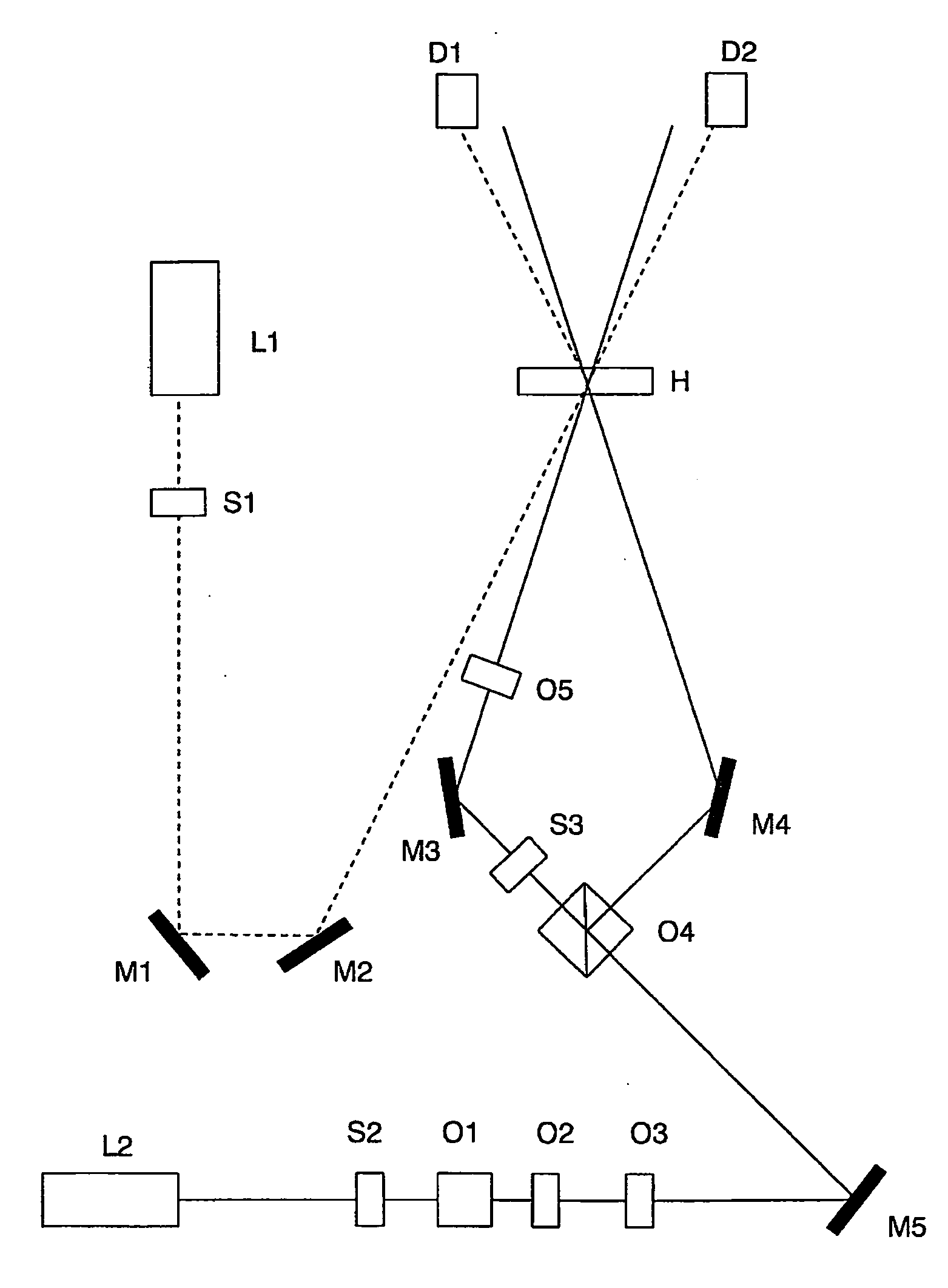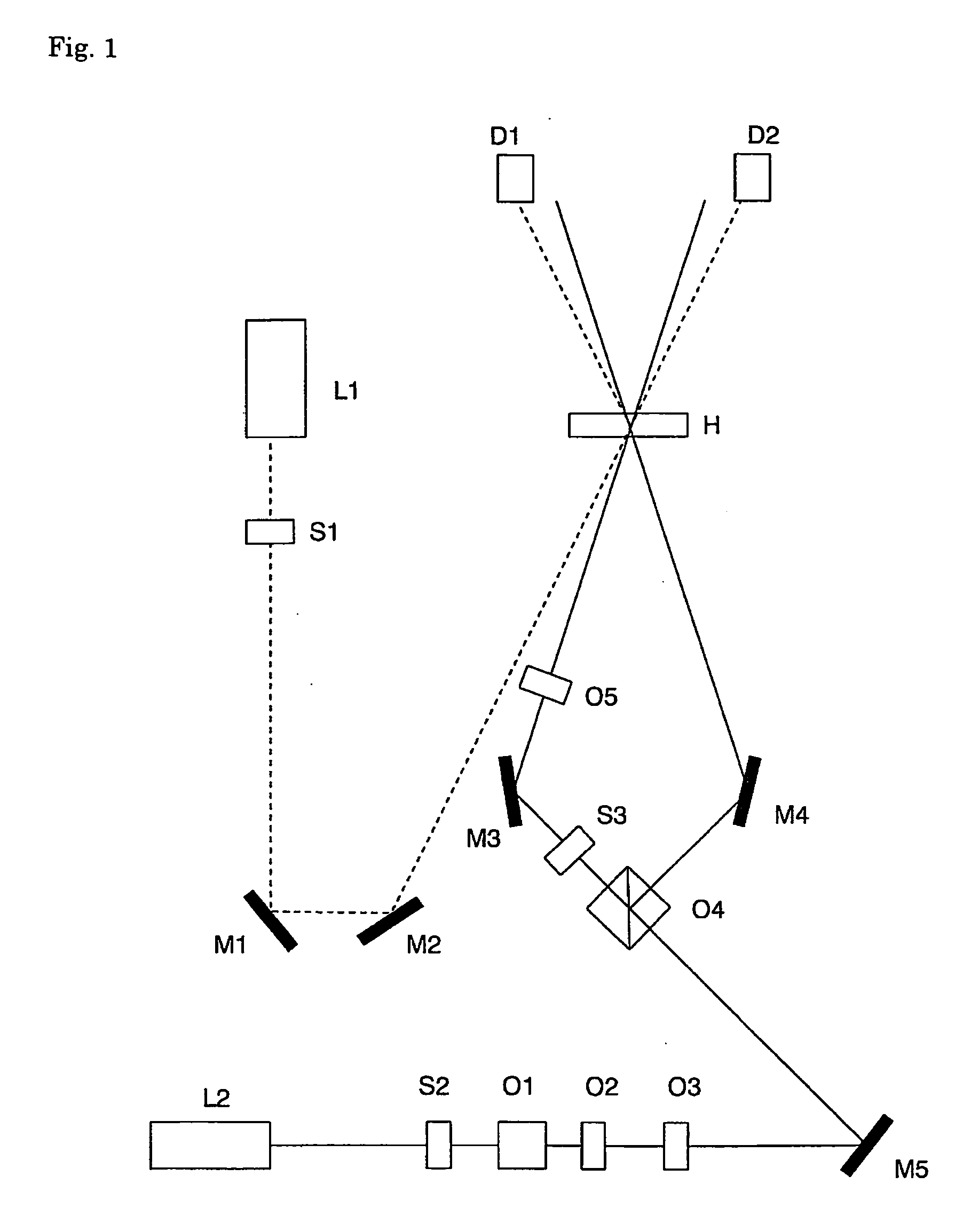Resin composition for hologram recording material, hologram recording material, and method for producing hologram recording medium
a technology of hologram recording material and composition, which is applied in the direction of photomechanical treatment, photosensitive materials for photomechanical apparatus, instruments, etc., can solve the problems of poor environmental resistance of holograms, limitation in resolution, and photosensitive plates and treatment, so as to improve the sensitivity and diffraction efficiency increase the capacity and recording speed of hologram recording media, and improve the effect of hologram recording materials
- Summary
- Abstract
- Description
- Claims
- Application Information
AI Technical Summary
Benefits of technology
Problems solved by technology
Method used
Image
Examples
production example 1
[0094]Production of Higher Refractive Monomer (V-1) having a Vinyloxy Group
[0095]Into a reaction vessel equipped with a stirrer, a temperature controller and a condenser, 100 parts of 20% aqueous solution of sodium hydroxide was charged and the temperature thereof was kept at 35° C. Subsequently, 11.0 parts of 9,9-bis-[4-(2-hydroxyethoxy)phenyl]fluorene, 10.7 parts of 2-chloroethyl vinyl ether and 0.170 parts of tetra-n-butylammonium hydrogensulfate were added and stirred for 12 hours while keeping the temperature at 35° C. The oil phase of the product was extracted with diethyl ether, dried over sodium sulfate, and then concentrated with a rotary evaporator. Thus, 9,9-bis[4-vinyloxydiethoxyphenyl]fluorene was obtained.
production example 2
[0096]Production of Higher Refractive Monomer (V-2) having a Vinyloxy Group
[0097]2,2-Bis[4-vinyloxydiethoxyphenyl]propane was obtained in the same manner as Production Example 1 except for using 6.46 parts of 2,2-bis[4-(2-hydroxyethoxy)phenyl]propane instead of 9,9-bis-[4-(2-hydroxyethoxy)phenyl]fluorene.
production example 3
[0098]Production of Active Methylene Group-Containing Compound (M-1)
[0099]Into a reaction vessel, 135 parts of methyl acetoacetate and 35 parts of trimethylolpropane were charged and heated to 145° C. over 1 hour while introducing N2. Then, stirring was continued at 145° C. for 1 hour while removing methanol with a decanter, and it was confirmed that almost the theoretical amount of methanol had been recovered. Thereafter, unreacted methyl acetoacetate was distilled off at 155° C. under reduced pressure to yield a desired compound. The number of the active methylene groups contained in one molecule was measured to be 3.7 functional groups (theoretically 4 groups).
PUM
 Login to View More
Login to View More Abstract
Description
Claims
Application Information
 Login to View More
Login to View More - R&D
- Intellectual Property
- Life Sciences
- Materials
- Tech Scout
- Unparalleled Data Quality
- Higher Quality Content
- 60% Fewer Hallucinations
Browse by: Latest US Patents, China's latest patents, Technical Efficacy Thesaurus, Application Domain, Technology Topic, Popular Technical Reports.
© 2025 PatSnap. All rights reserved.Legal|Privacy policy|Modern Slavery Act Transparency Statement|Sitemap|About US| Contact US: help@patsnap.com



